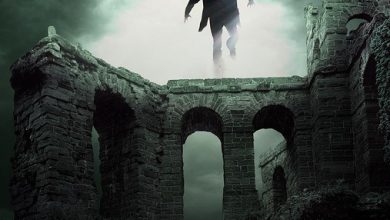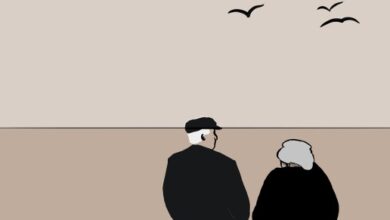Diary of a Madman is a groundbreaking short story written by Lu Xun, one of the most prominent figures in modern Chinese literature. The story is presented as the diary of a man who gradually descends into madness, driven by the discovery of a horrifying truth about his society. The story is often interpreted as a critique of Confucianism, feudalism, and the oppressive social order prevalent in China at the time.
Diary of a Madman | Summary
The story begins with the narrator talking about two unnamed brothers who were his good friends in High School but have eventually lost touch ever since. He hears that the younger one is gravely ill and decides to “call on them” on his journey home.
The older brother tells the narrator that the younger brother, however, has recovered and gone elsewhere to work. He gives the narrator two volumes of his brother’s diary, in which the nature of his past illness can be seen. The writing is confusing, and the narrator decides that the diarist suffered from a severe “persecution complex”.
In the first entry, the brother, who is writing in the diary, writes that the moon is very bright and that he has not seen it for over thirty years. He must be careful because the dog at the Chao house has looked at him twice. In the second entry, he notes that there is no moon at all, which “bodes ill“. He is skeptical of Mr. Chao, who looks at him as if he wants to murder him. The same look was given to him by everyone he passed. They discuss him in whispers, but the brother is unafraid. He wonders what Mr. Chao has against him and if he is conspiring against him.
In the third diary entry, the brother gets even more wary of the people outside who look “frightened and fierce”. A woman says to her son that she will bite off several mouthfuls of him. Old Chen drags the brother home, but people at home give him the same look and lock the door from outside when he goes inside the study. A tenant of theirs had reported a few days ago that due to the failure of crops, someone in their village had been beaten to death and eaten. This scares the brother even more, and he concludes that everyone around him is a man-eating cannibal. He reads the ancient texts half the night about man-eaters in ancient times until he sees words between the lines, and he concludes that everyone wants to eat him too.
In entry four, he tells Chen that he wants to have a stroll in the garden and tells him to inform his older brother. His brother has a murderous gleam in his eyes and tells him that he looks much better today. He tells the brother writing the diary that Mr. Ho will come to examine him, which the brother concludes is code for an executioner in disguise. Mr. Ho tells him not to let his imagination get the better of him, but he is not convinced and concludes that his brother too is a man-eater who wants to eat him because he is so brave. He also concludes that Mr. Ho is trying to fatten him up and that he too is a man-eater.
By entry seven, the younger brother is convinced that they don’t kill anyone outright because that would be suspicious but rather set traps everywhere, which will force him to kill himself. He thinks about a beast called a hyena,” which eats dead flesh, and the people around him do too. His brother’s cannibalism disturbs him the most. He asks a twenty-year-old if eating flesh is right, and the youth jokes it off and says people won’t eat flesh because it is not a famine. The brother realizes he too is in on it. Everybody, irrespective of their professions, is in on this great conspiracy.
His brother tells him one day that all “primitive people” ate human flesh to begin with. He tells him about the old story of Yi Ya, who boiled his son to eat. The brother asks his older brother why he is a man-eater. The older brother smiles cynically, and everyone outside the gate cranes their necks to peek in. The older brother shouts and asks everyone to get out, saying there is no point in looking at a madman.
Thus stigmatized as a madman, he tells everyone that they should change and will be eaten by each other in the future. He considers that their little sister, who died when she was five, must have been eaten by his brother as well, and his mother did not realize it, or maybe she knew but did not say it outrightly. He realizes in his last diary entry that he has been living among flesh eaters, and his brother might have fed them their sister’s flesh. He might have unknowingly eaten her flesh too, and it is his turn to be eaten. He considers that perhaps there are children who have not eaten men yet and that they must be saved.
A Madman’s Diary | Analysis
Lu Xun’s story chronicles the younger brother’s slow descent into madness as his skepticism against the world being that of man-eaters increases. It was first published in 1918 and clearly shows influences from Nikolai Gogol’s short story, Diary of a Madman; the ‘madman’ sees the world more clearly than those around him.
The ‘madman’ sees cannibalism as prevalent in society and refers to the Confucian classics to get help dealing with the situation around him. He finds cannibalism in the classics too, and it is his belief that these contain a humanistic concern justifying the superiority of Confucian culture. The story elaborates on the dangers of mob mentality and calls for a new cultural direction in society. The story elucidates how Chinese society has Confucian values at the very core of its being; the madman is wary of the dogs barking at him and the “murderous gleam” he receives from everyone all the time. Interestingly, he ends the diary by saying that there must be children who are not man-eaters yet and that they must be saved. This is almost a Marxist call for a revolution to realize society’s descent into Confucian fanaticism, demanding a new direction in which individuals must live their lives.
“Diary of a Madman” is not just an individual’s descent into madness; it also serves as a broader social commentary on the repressive nature of Chinese society at the time. Lu Xun critiques the oppressive family structures, hierarchical social relationships, and lack of individual autonomy prevalent in contemporary China. The story encourages readers to question and challenge the prevailing social norms. It challenges the traditional Confucian values that were deeply ingrained in Chinese society at the time. Xun portrays Confucian principles as contributing to the oppressive social structure and perpetuating a dehumanizing environment. The protagonist’s realization of the villagers’ cannibalistic intentions is a metaphorical critique of the moral decay brought about by Confucian teachings. In this sense, it calls for a revolutionary cultural direction and a complete alteration of the societal structures dominating community relations.
The chilling aspects of the story are that ideological apparatuses like religion also condone cannibalism in the story, and Mr. Ho’s medical science legitimizes the same as well. The madman’s psychosis is that he must imagine less and relax, implying that he should assimilate into this cannibalistic society to survive. At the beginning of the story, a reader is informed that he has been cured of his malady and has taken up an official post somewhere, insinuating that he too has assimilated into this sub-human culture and could not be the revolution that was required. According to Xun, Confucian morality has infiltrated society so deeply that even those who see the truth in it cannot effect change.
A Diary of a Madman | Literary Devices
- Allegory: Cannibalism is used as an allegory for the dehumanizing effects of the traditional social order. Lu Xun critiques the practice of the “eating of human hearts” metaphorically, highlighting the predatory nature of the relationships among people in his society and that of Confucianism. This critique reflects the author’s broader condemnation of the oppressive nature of feudalism and its hierarchical social structure.
- Satire: Xun employs satire when the madman’s growing paranoia about cannibalism around him is met with the calm and normal behavior of the villagers, emphasizing how the ills of Confucianism have penetrated deep in society and the only one who can see clearly through it is deemed a madman.
A Diary of a Madman | A Character Sketch
The Madman
The so-called madman of the story is reminiscent of Nikolai Gogol’s madman, who is deemed mad when he sees the harsh realities of society himself. His slow descent into madness and paranoia is the result of the ills he sees in a society so strictly dominated by Confucian values. He is wary of everyone around him because they are all part of the big “conspiracy” to eat him up. The protagonist’s descent into madness is a metaphorical representation of his awakening to the harsh realities of his society. As he realizes the cannibalistic nature of his fellow villagers, he becomes increasingly alienated and disturbed. Lu Xun uses madness to emphasize the profound impact of societal repression on an individual’s psyche.
A Diary of a Madman by Lu Xun is a revolutionary and influential work that explores themes of madness, cannibalism, and Confucianism and offers a satirical critique of society. Through its literary techniques and metaphors, the story serves as a scathing indictment of the oppressive social order, making it a significant piece of Chinese literature and a landmark in the modernist movement. Published in 1918, Lu Xun’s story is thus a wake-up call for the Chinese citizen to discover a new cultural shift in the community and abide by it rather than living oppressively under Confucian morality.


